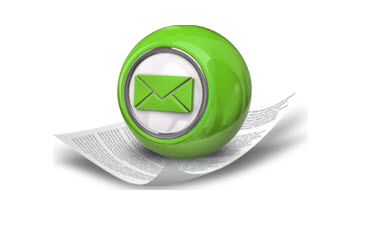6 Tips For Creating A Mobile-Friendly Email Message (Part 1)
Published
Have you ever opened an email on your mobile device, and the design was much too large for the display screen? Do you have to scroll all over to view the contents of the email? Would you like to send an email that looks great on a desktop computer and mobile devices?
A mobile-friendly email is an email that displays optimally between a desktop/laptop and a mobile device. By utilizing mobile-friendly email design, you ensure that your message will look great regardless of where your audience reads it.
In the 2016 State of Email Report, Litmus analyzed over 13 billion emails in order to provide a comprehensive overview of email marketing trends across all industries. Their report notes that 65% of emails were opened on mobile devices as opposed to email clients such as Outlook or web-based email. (Click here to view the Litmus infographic)
Wow, 65%! This emphasizes the importance of creating mobile-friendly email messages so that our audience can read them!
Simplify the Layout
One common issue that we see with email design is use of a newspaper-style layout. This layout typically consists of multiple columns and rows, and it presents several challenges for your audience.
Your content will be flexible for all screen sizes, and you’ll enjoy creating email messages because you’ll be spending more time creating compelling content instead of wrangling HTML tables!
Include a Call to Action
Every email should have a call to action; our call to action should be instructional giving our audience a clear idea of what to do next. I recommend making the call to action simple. It should be between two and five words, and contain actionable verbs as well. I recommend adding words such as "Now" or "Today" in the call to action to create a sense of urgency. If we don't get our users to act now, they may not come back later!
Some examples of good call to actions are:
680 Pixels or Less
The width of your template should be 680 pixels or less; at this size, you ensure that it will be displayed properly on most mobile devices. If the width is larger than 680 pixels, then users may be scrolling left and right to view the message, and we want to avoid that.
I typically recommend between 600-680 pixels to be safe, because some older devices may not display properly at 680 pixels so make sure that you are testing your message on multiple devices.
With these three tips, we have the beginning of an effective, mobile-friendly, email message. Be sure to check back next week, when we reveal how to effectively use subject lines, images and fonts!
Want to see examples of really good emails? Check out Really Good Emails!
Note: Please note that Blackbaud NetCommunity Support does not provide advanced design support, and any design services need to go through your Account Manager.
In the 2016 State of Email Report, Litmus analyzed over 13 billion emails in order to provide a comprehensive overview of email marketing trends across all industries. Their report notes that 65% of emails were opened on mobile devices as opposed to email clients such as Outlook or web-based email. (Click here to view the Litmus infographic)
Wow, 65%! This emphasizes the importance of creating mobile-friendly email messages so that our audience can read them!
Simplify the Layout
One common issue that we see with email design is use of a newspaper-style layout. This layout typically consists of multiple columns and rows, and it presents several challenges for your audience.
- The layout does not resize, and users need to pinch, zoom and scroll left or right to see everything.
- Content may run together, making the message look sloppy and hard to read.
- This layout often contains nested tables. The more nested tables that we have, the more unlikely it is that the message will look good on all devices and email clients.
Your content will be flexible for all screen sizes, and you’ll enjoy creating email messages because you’ll be spending more time creating compelling content instead of wrangling HTML tables!
Include a Call to Action
Every email should have a call to action; our call to action should be instructional giving our audience a clear idea of what to do next. I recommend making the call to action simple. It should be between two and five words, and contain actionable verbs as well. I recommend adding words such as "Now" or "Today" in the call to action to create a sense of urgency. If we don't get our users to act now, they may not come back later!
Some examples of good call to actions are:
- Donate Online Now
- Give a Gift Today
- Look Inside
- Visit Our Website
- Learn
680 Pixels or Less
The width of your template should be 680 pixels or less; at this size, you ensure that it will be displayed properly on most mobile devices. If the width is larger than 680 pixels, then users may be scrolling left and right to view the message, and we want to avoid that.
I typically recommend between 600-680 pixels to be safe, because some older devices may not display properly at 680 pixels so make sure that you are testing your message on multiple devices.
With these three tips, we have the beginning of an effective, mobile-friendly, email message. Be sure to check back next week, when we reveal how to effectively use subject lines, images and fonts!
Want to see examples of really good emails? Check out Really Good Emails!
Note: Please note that Blackbaud NetCommunity Support does not provide advanced design support, and any design services need to go through your Account Manager.
News
ARCHIVED | Blackbaud NetCommunity™ Blog
04/19/2016 3:12pm EDT


Leave a Comment